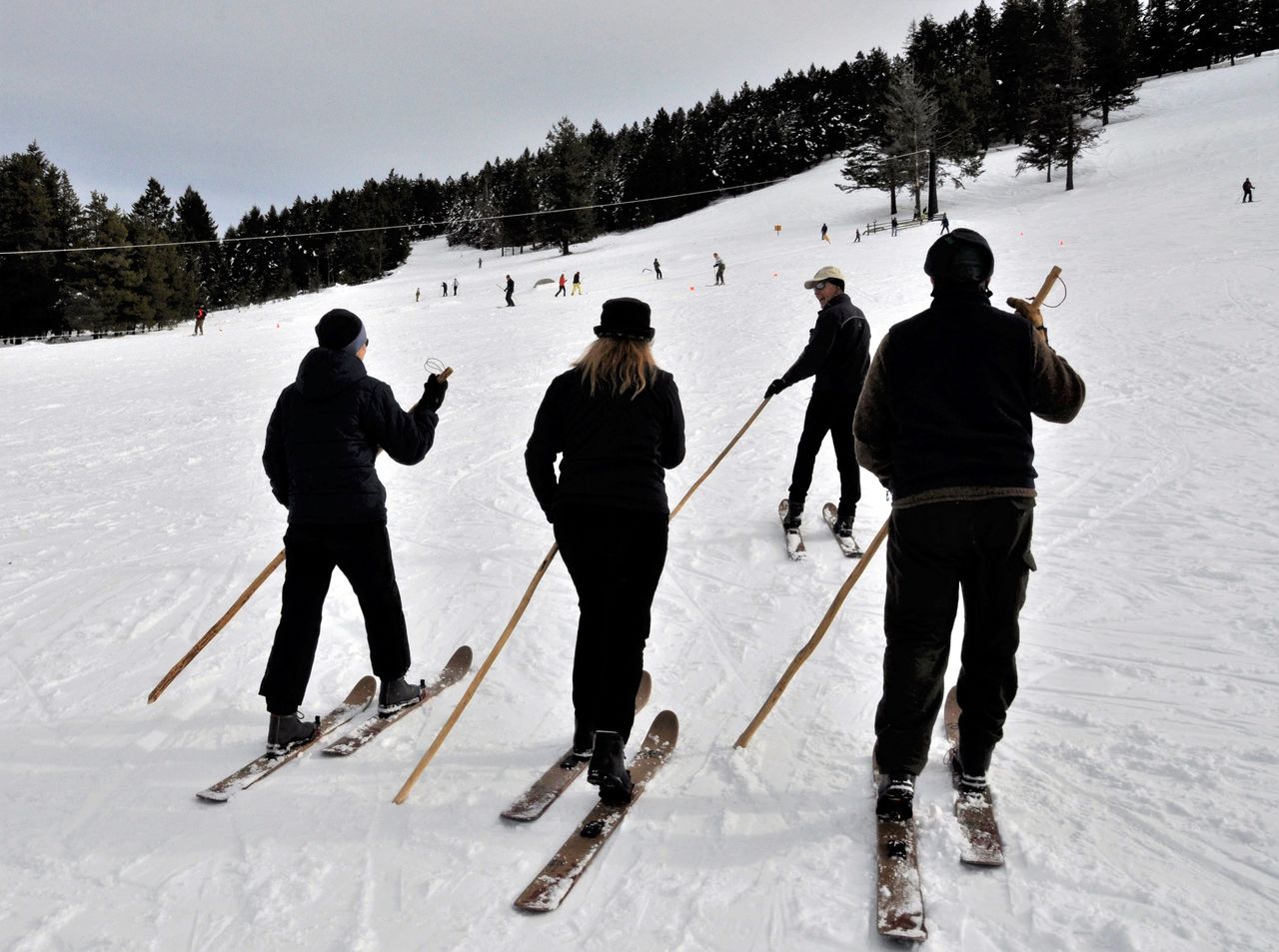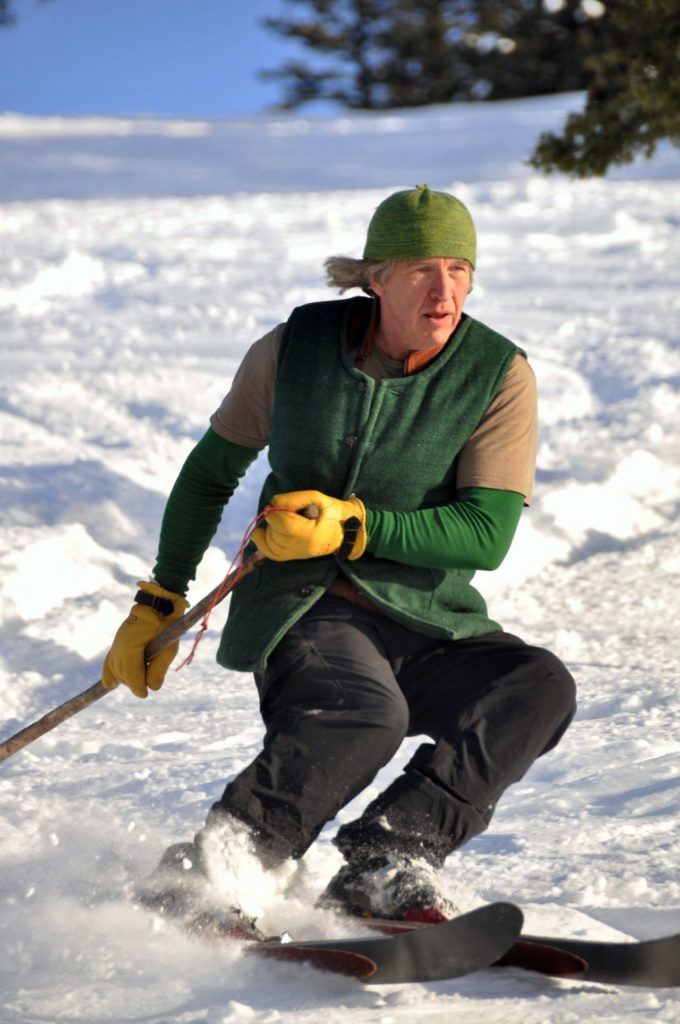TONASKET — Short, fat skis with free-heel bindings and built-in climbing skins are luring winter trekkers into a sport Nils Larsen calls “skishoeing.”
“Adults step out on these and feel like kids again,” said Larsen, who attracted dozens of people to try out his Hok skis recently at tiny Sitzmark Ski Area near Tonasket.
“People get focused on matching their size and weight to the ski,” he said. “We talk more about usage. The 145-centimeter version has more ski DNA while the 125 has more snowshoe DNA. Either way, the emphasis is on efficiency and mobility.”
A kids’ version also is available.
Larsen, who emerged as a free-heel downhill guru in the 1980s, traveled to northwestern China to make a documentary film on indigenous people who still use skis with nailed-on horse skin for traction in the Altai Mountains region bordering Mongolia.
Those skis and horse skins — along with a single, long, wooden pole called a tiak for balance — may be the roots of skiing, he said.
Larsen, 61, pitches the technique and products from Curlew, Washington, population 200, the world headquarters for Altai Skis. “We’re the largest ski company in Curlew,” he deadpanned.
In 2009, he launched the Altai Skis concept with Francois Sylvain of Quebec. They had worked together in ski development for Karhu.
Larsen and Sylvain formed the company devoted to building a short ski and permanently installed skin that allows the skishoer to have traction while allowing forward glide.
The first Hoks were sold to consumers in 2011.
The glued-in, nylon-polyester skins purposely make them much slower than skis, but you wouldn’t know it watching a Larsen demonstration. The laid-back three-pin wizard could strap his boots into fence railings and still look graceful carving turns on gnarly slopes.
“If your goal is skiing fast, use skis,” he said, noting that the big advantage of the Hok is utility.
For example, several moose and cougar researchers in Yellowstone Park have switched from snowshoes to Hoks for doing their backcountry work more efficiently, he said.
Larsen and longtime Methow Valley Nordic skiing instructor Don Portman demonstrated the easy transition to skishoeing during an off-piste Hok test drive.
“You have to step yourself out of the alpine attitude,” Portman said. “Hoks aren’t as fast. They have less glide. The idea is to get into them and just go — uphill, downhill, through brush ….”
When side-hilling, Portman showed how the tiak works best pointed to the uphill side. “That’s counterintuitive,” he said. “You think it should point downhill, but try it; uphill is better.”
High on a timbered slope, Portman pointed his Hoks downhill toward a brushy opening a telemark skier would trek half a mile to avoid.
He flexed his knees into a classic downhill position and then eased his hips slightly backward. This put some weight onto the pole, which he extended backward like a tail and into the snow
He seemed to be using the tiak as a rudder. However, he was forming a tripod. “As a ski instructor for 30 years, I never teach using poles for balance,” he said. “But a single tiak with Hoks is all about balance. It’s so easy and intuitive.”
While some features have been improved from the outset, the natural finish of the Hok’s wood laminate construction hasn’t changed. “We’re not into revolving graphics every year,” Larsen said.”
The Hoks shine as an incentive to make tracks in what Larsen calls “pocket backcountry.”
“You can drive to the end of the road and follow a critter track or just climb up into the woods and make a few turns where you might not go on backcountry skis,” he said. “It’s about simplicity.”
Talk to us
> Give us your news tips.
> Send us a letter to the editor.
> More Herald contact information.


























